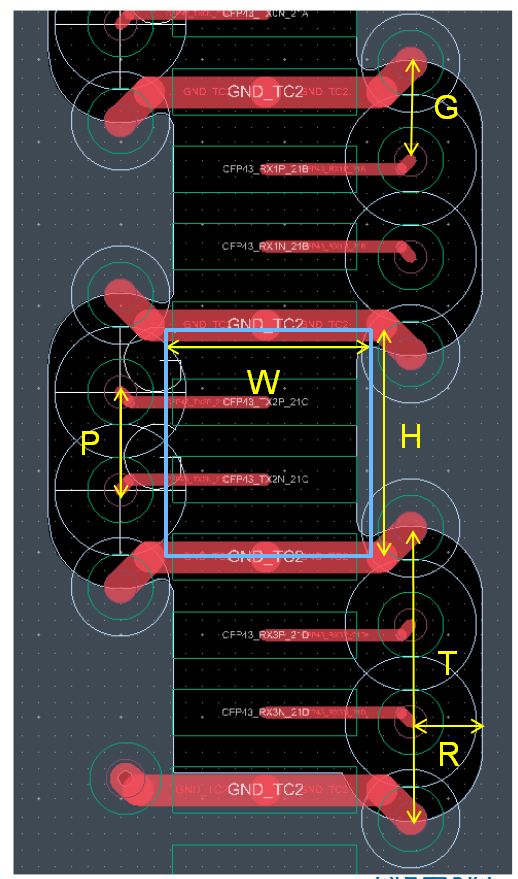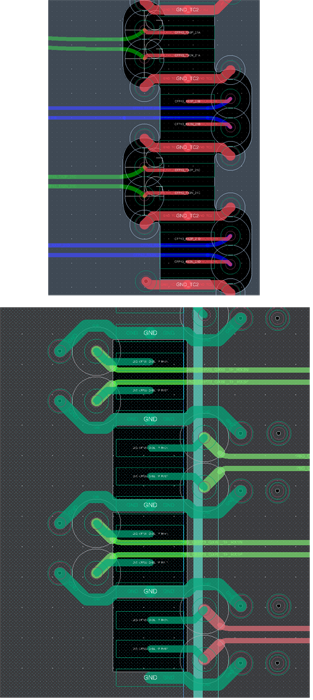Visible to Intel only — GUID: joc1463342431837
Ixiasoft
Visible to Intel only — GUID: joc1463342431837
Ixiasoft
Recommended PCB Design Guideline at the CFP2/CFP4 Connector

Intel recommends that you observe the following design guidelines:
- For CFP4: rectangular (W=62 mil x H=60 mil) cutout on both layers GND02/GND04 1 under the CFP4 pads
- Signal and GND vias, drill diameter = 10 mil, Via pad diameter = 20 mil
- All signal vias are back-drilled
- Each signal via must have one single GND via
- Signal anti-pads: T = 90 mil, R = 22.5 mil
- G (Signal-to-GND via pitch) = 30 mil
The differential lanes in green can be routed on any signal layer.
The differential lanes in blue can only be routed on signal layers where the GND reference layers are not GND02/GND04 because they cross the cutout area under the connector. You can route these lanes from the opposite direction (similar to the green lanes) if there is space for routing. In this case, all signal layers can be used for signal routing.

Make sure that you have proper GND reference plane for signal routing.
Observe these CFP2/CFP4 guidelines for better performance at 28 Gbps on the main channel:
- Match the length for each pair (between P and N lanes). Both P and N lanes must be in phase to recover the data. The skew matching in a pair is 2 ps.
- Length matching between pairs is not mandatory unless it is specified by designers.
- For optimized FPGA break-out layout design, refer to FPGA Fan-out Region chapter.
- Always use minimal routing length from the FPGA to the connector to achieve minimum insertion loss. Refer to PCB Stackup Selection Guideline chapter for Stackup and material selection and Recommendations for High Speed Signal PCB Routing chapter for HSSI PCB routing.
- Ensure that the insertion loss and return of the channel is within specifications. Refer to Electrical Specifications chapter for specifications.